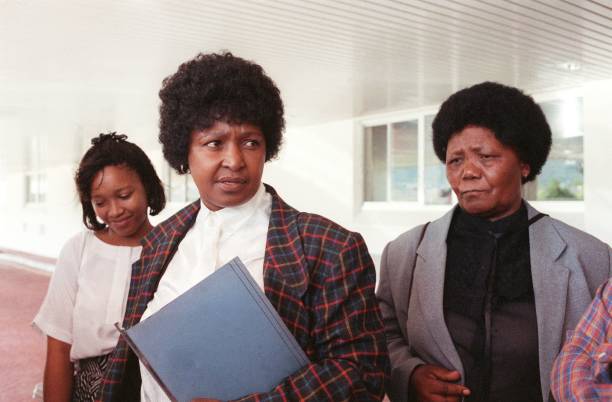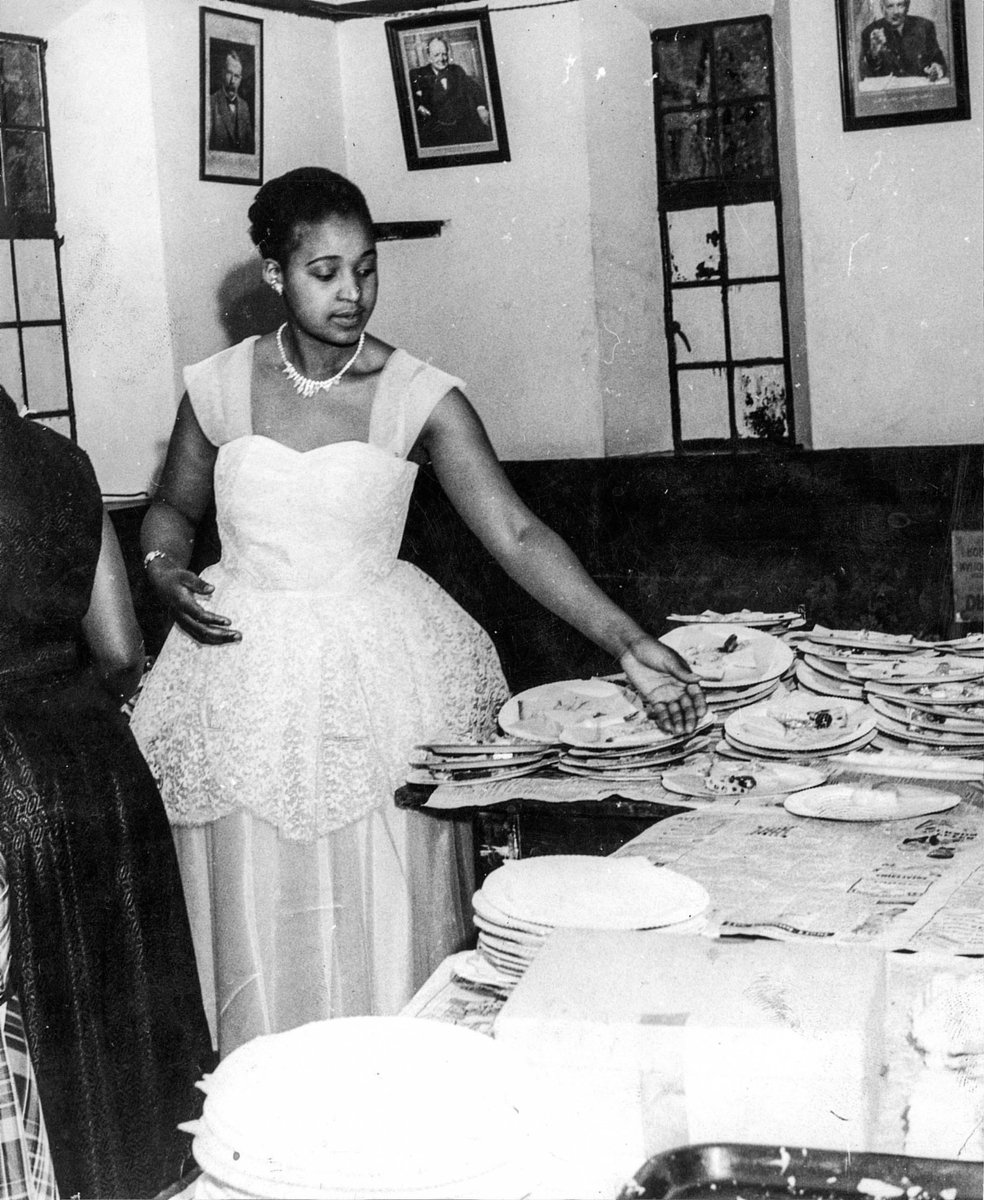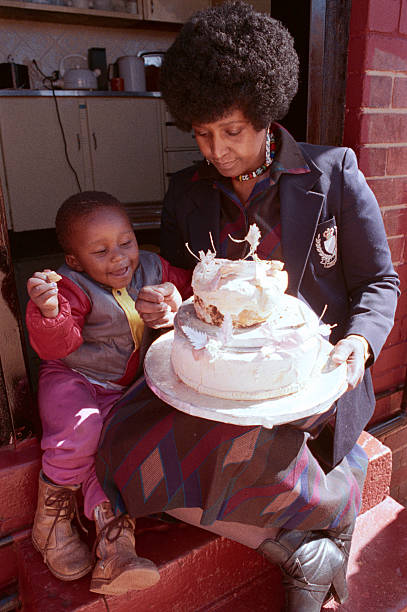Mam& #39; Nomzamo was born on this day on 1936. She would have turned 84 today. Here she is with Zindzi and her sister-in-law umama uLieby Piliso.
UmaNgutyana was born eMbizana to Methodist parents. uTata wakhe had decided not to take up chieftaincy much to the disapproval of his mother Makhulu uSeyina (who blamed her daughter-in-law, Nomathamsanqa) for this decision). He also refused to take more wives.
MaNgutyana were a clan integrated into King Faku& #39;s royal house through marriage when iNkosi uMazingi and Faku made treaty in the years of migration and upheaval around the era kaSgidi. UMazingi had been known for his military strength and ruled in the mkhomazi region.
This is where we can trace MaNgutyana& #39;s royal ancestry. Nomathamsanqa may come from mixed heritage (apparently so did King Faku) between amaMpondo & the Germans (as a result of the shipwrecks precolonialism). This is one thing that Makhulu Seyina hated about her daughter-in-law.
Hayi man not Mazingi. Rather uMadikizela. Mam& #39; Nomazamo& #39;s grandfather was Mazingi. Anyway Mazingi was the one who exposed all his children to mission education when he granted Methodist missionaries permission to build schools on his land. The agreement also stipulated that his
Wife would still own the land, and more specifically the plot where her trading store was after his death. This is why his kids all went through methodists school, hence MaNgutyana& #39;s father uKokani became a teacher and devout methodist.
Now Mazingi dies. Do you think those methodists stuck to their agreement? They didn& #39;t. And most of the Madikizela land (this is a huge family to date, so you can imagine how much more there was). Apparently Mazingi welcomed the message of the methodists. He had also converted.
That meant the conversion of his wives too, much to the reluctance ka Seyina. But she did. She exchanges isdwebe for the clothing we tend to see on oomakoti as this was the style of German settler women in the 19th century.
This thing of converting & also the missionaries not fulfilling their end of the deal re land sealed Seyina& #39;s hatred. Kokani marries a fellow teacher, Nomathamsanqa with fair skin & green/blue eyes who "lures" her son away from taking up chieftaincy duties like the heir he is.
These are the dynamics in which umaNgutyana was born. Coming from a warrior clan that became known as the sons of Faku. A methodist family on both sides of the family tree. And land dispossession. These things are part of what shape her.
So she is born. Not to much fanfare because the couple were expecting a son. According to tradition a second son born to the couple is who inherits the mother& #39;s possession when she dies. Also a house full of girls means nothing to some families because heritage is patrilineal.
For a lot of our families, that is. This is another dynamic maNgutyana notes in interviews. It fueled her sense of wanting to prove herself, of even going as far as behaving like a boy. She even learned stick fighting becoming far more skilled than the other boys.
Let& #39;s also talk about her name Winnifred which means friend of peace. Apart from contact with Germans, AmaMpondo actually supported them when the Kaiser went to war with the British (for obvious reasons) This is why OR& #39;s name was Kaizana. Kokani was German history enthusiast too.
Another dynamic that shapes her in addition to the art of stick fighting, was Nomathamsanqa& #39;s death due to TB. By this time a second baby boy had arrived after so many daughters. He was an infant when Nomathasanqa died. uNaNgutyana was just 9 years old.
Anyway wakhula uZanyiwe. Her father, a history teacher taught on the wars of resistance in the Eastern Cape. She attended Shawbury High (Methodist school) and where she became Prefect. Some of her teachers were Fort Hare graduates. This is where she learns a bit about the ANC.
In an interview with Fatima Meer for the biography Mandela: Higher Than Hope, umaNgutyana shares she was sexually harassed by her deputy principal sigh..Her studies even suffered because of this. She never reported it. She feared no one would believe her. Mxim what& #39;s new?
Let& #39;s continue after lunch.
Okay so Zami matriculates and heads to Johannesburg to begin her studies as a social worker at the Jan Hofmeyer School. Here she is in 1956. By this time Drum is a major magazine. This image appeared in one of their issues.
The 50s is the era of the Defiance Campaign. The most famous political leader of that period was the young lawyer Nelson Mandela. He and his colleague OR were partners of their firm Tambo and Mandela (or other way round).
After completing her studies, uMaNgutyana becomes the first Black medical social worker. She is employed at Baragwanath and this is where she befriends the nurse Adelaide Tsukudu who introduces her to Tambo. This is the same time she meets Mandela.
The story that led to 14 June 1958 is common knowledge I think. So I won& #39;t go into those details. But the wedding ceremony was never quite completed the way she had wished. Madiba was a banned man so their celebrations had to be cut short.
I am sure many of you have read 491 Days. You know that uZami had a heart condition. This was as a result of a heart attack she had in 1958 in detention. Women staged a march & were arrested. She was pregnant at the time. Luckily she was in a cell with a nurse: Albertina Sisulu.
In solitary confinement in 1969 this condition was used against her often, depriving her of her medication. She even contemplated suicide as a form if protest by devising a strategy to not take treatment. She decided she wouldn& #39;t give her torturers the satisfaction of dying.
I recommend 491 Days as a starting point as this was her prison journal. It details the night of her arrest and every thing she went through. When we talked about it at her home in Orlando, it struck me how Zami remembered her torturers words word for word. Very sharp memory.
Also, Shanthini Naidoo& #39;s Women in Solitary is an important work and adds the voices of MaNgutyana& #39;s women comrades do read it.
As we know she was the wife of a man incarcerated on Robben Island. She played an instrumental role in making sure his name was never forgotten. In doing so she emerged as the figurehead of the liberation movement within the country since most leadership went into exile.
As I said earlier, the Mandelas couldn& #39;t finish their celebrations they couldn& #39;t even enjoy their wedding cake. But uZami kept it. She would take it out on their anniversary every year as she awaited his return. This was taken nearly 20 years after her wedding.
 https://abs.twimg.com/emoji/v2/... draggable="false" alt="📸" title="Kamera mit Blitz" aria-label="Emoji: Kamera mit Blitz">: David Turnley
https://abs.twimg.com/emoji/v2/... draggable="false" alt="📸" title="Kamera mit Blitz" aria-label="Emoji: Kamera mit Blitz">: David Turnley
Actually, nearly 30 years. That cake was destroyed in the fire after students of Daliwonga set her Diepkloof home on fire in retaliation against the rape of a student by MUFC (a group infiltrated with apartheid spies including Jerry Richardson).
I offer a few thoughts on this violent era in this essay where I compared to texts: Zami& #39;s and Anne Bezdrob& #39;s A Life. https://johannesburgreviewofbooks.com/2018/05/07/banishing-the-white-gaze-ntombizikhona-valela-reflects-on-winnie-madikizela-mandelas-literary-legacy/">https://johannesburgreviewofbooks.com/2018/05/0...
Her relationship with Helen Joseph was important to her. She regarded Joseph as a mother- a void left by her mother& #39;s death. She talks about this in Part of My Soul Went With Him. In fact she was in awe of the women Mandela introduced her to especially Ma Sisulu & Ma Ngoyi.
I think I& #39;ll pause here for now. I recommend you guys give yourself time to watch the Faces of Africa series: Winnie Mandela: Black Saint or Sinner on YouTube. It& #39;s in two parts. Watch Felicia Mabuza-Suttle& #39;s interview with Zami. Also read Alice Walker& #39;s poem.
And watch this 1986 documentary https://youtu.be/KP7p5hwniw0 ">https://youtu.be/KP7p5hwni...

 Read on Twitter
Read on Twitter


 : David Turnley" title="As I said earlier, the Mandelas couldn& #39;t finish their celebrations they couldn& #39;t even enjoy their wedding cake. But uZami kept it. She would take it out on their anniversary every year as she awaited his return. This was taken nearly 20 years after her wedding.https://abs.twimg.com/emoji/v2/... draggable="false" alt="📸" title="Kamera mit Blitz" aria-label="Emoji: Kamera mit Blitz">: David Turnley" class="img-responsive" style="max-width:100%;"/>
: David Turnley" title="As I said earlier, the Mandelas couldn& #39;t finish their celebrations they couldn& #39;t even enjoy their wedding cake. But uZami kept it. She would take it out on their anniversary every year as she awaited his return. This was taken nearly 20 years after her wedding.https://abs.twimg.com/emoji/v2/... draggable="false" alt="📸" title="Kamera mit Blitz" aria-label="Emoji: Kamera mit Blitz">: David Turnley" class="img-responsive" style="max-width:100%;"/>


